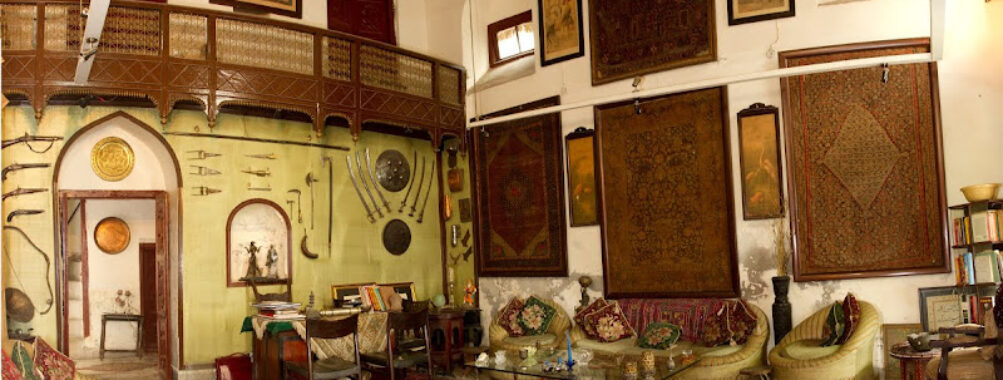
Faqeer Khana Museum
Table of Contents
Description
The Faqeer Khana Museum in Lahore is one of those places that quietly takes you by surprise. It doesn’t scream for attention like the bigger, more commercial museums, and maybe that’s exactly why it feels so special. Tucked away in the heart of the old city, this private museum is run by the Fakir family, who have been safeguarding their treasures for generations. The collection itself is massive—over 20,000 artifacts spanning centuries—and it’s the kind of place where you can spend hours discovering miniature paintings, Islamic manuscripts, Mughal relics, Chinese porcelain, Persian carpets, and even quirky everyday objects that once belonged to nobles and saints. It’s not a polished, modern museum with glass walls and shiny lights; it’s more like stepping into someone’s ancestral home where history has been layered over time.
Now, let’s be honest. The museum isn’t perfect. Some visitors find it a bit overwhelming or even a little disorganized, and accessibility is definitely limited if you’re someone who relies on wheelchairs or ramps. But that’s also part of its charm—it hasn’t been commercialized or stripped of its authenticity. It still feels lived-in, like history hasn’t been staged but simply preserved. And if you’re the type who loves old-world stories, you’ll find yourself hooked. I remember wandering through its halls and suddenly spotting a handwritten Quran that was centuries old. It gave me goosebumps, the kind you get when you realize you’re standing in front of something that has been touched by countless hands before yours. That’s the kind of quiet magic this place holds.
Key Features
- Over 20,000 artifacts covering three centuries of history, from the 18th to 20th century
- A remarkable collection of miniature paintings, considered one of the finest in South Asia
- Islamic art and manuscripts, including rare handwritten Qurans
- Chinese porcelain and Persian carpets showcasing cross-cultural trade and influence
- Woodwork, coins, and textiles that reflect everyday life of past eras
- Family-run atmosphere that feels more personal than institutional
- Located inside the old walled city of Lahore, adding to its historic setting
Best Time to Visit
If you’re planning a trip, the cooler months between November and March are hands-down the best. Lahore summers are no joke—hot, sticky, and draining—so wandering through galleries without air conditioning can get uncomfortable. Winter, on the other hand, is pleasant, and the old city has this lovely crisp air that makes exploring more enjoyable. Weekdays are generally quieter, which means you’ll have more time to linger without feeling rushed. I once went on a Friday morning, and it felt like I had the place almost to myself, which made the experience even more personal. Plus, if you’re already in Lahore during spring, combine your visit with a walk through the nearby old bazaars—it’s like stepping into a living museum outside the museum walls.
How to Get There
Getting to the Faqeer Khana Museum is part of the adventure. It’s located inside Bhatti Gate, one of the entry points to Lahore’s walled city. The streets are narrow, bustling, and sometimes chaotic, so don’t expect a smooth drive right up to the entrance. Most travelers prefer to take a rickshaw or walk the last stretch through the alleys. If you’re new to Lahore, it might feel a little intimidating at first—motorbikes zipping past, shopkeepers calling out—but once you relax into the rhythm, it’s actually quite fun. And here’s a tip: ask locals for directions. People in the old city are usually more than happy to point you toward the museum, and you might even get a story or two along the way. Just don’t rely too much on Google Maps here; it tends to get confused in the maze of streets.
Tips for Visiting
First things first—plan ahead. Entry is usually by appointment, and it’s recommended to arrange your visit in advance rather than just showing up. The museum is family-run, and they take pride in guiding visitors personally, which makes the whole thing feel more intimate. Don’t rush through. Give yourself at least two hours, maybe more if you’re the type who likes to read every little label or sketch notes. Photography rules can be strict, so it’s best to ask before snapping pictures. And remember, this isn’t a government-run facility with fancy amenities. There are basic restrooms, but no café or restaurant on site, so eat beforehand or plan to grab food in the nearby bazaar afterward.
One more thing: wear comfortable shoes. The old city’s cobbled streets and uneven paths can be tricky, and you’ll probably end up walking more than you expect. Also, if you’re traveling with kids, it’s actually a surprisingly good spot—they’ll be fascinated by the swords, coins, and colorful paintings. Just keep an eye on them, because some of the displays are delicate and not behind glass. Personally, I’d also say go with an open mind. This isn’t a slick, modern museum—it’s a family home filled with stories. If you treat it like that, you’ll walk away not just with knowledge but with a feeling, and that’s something not every museum can give you.
Location
Places to Stay Near Faqeer Khana Museum
Find and Book a Tour
Explore More Travel Guides
No reviews found! Be the first to review!